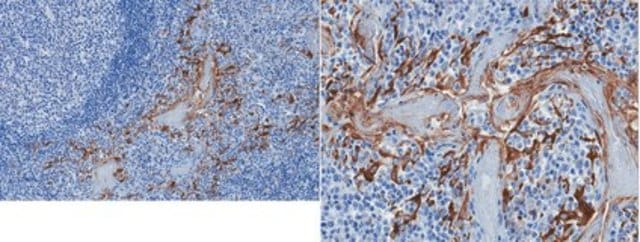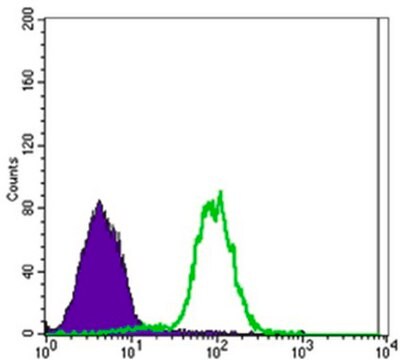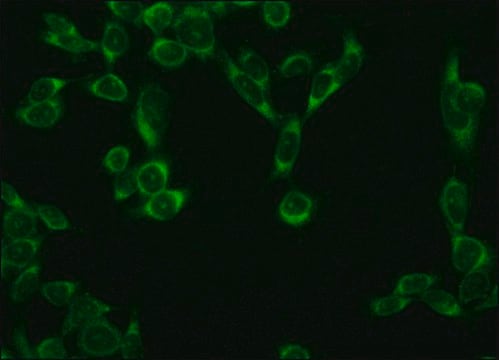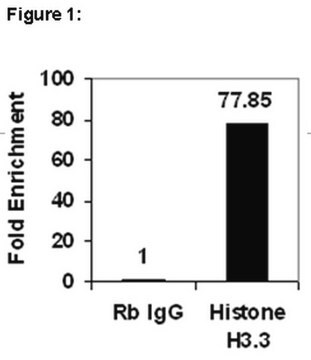MABF957
Anti-CLEC-2 Antibody, clone AYP1
clone AYP1, from mouse
Synonim(y):
C-type lectin domain family 1 member B, C-type lectin-like receptor 2, CLEC-2
About This Item
Polecane produkty
pochodzenie biologiczne
mouse
Poziom jakości
forma przeciwciała
purified immunoglobulin
rodzaj przeciwciała
primary antibodies
klon
AYP1, monoclonal
reaktywność gatunkowa
human
metody
flow cytometry: suitable
izotyp
IgG1κ
numer dostępu NCBI
numer dostępu UniProt
Warunki transportu
ambient
docelowa modyfikacja potranslacyjna
unmodified
informacje o genach
human ... CLEC1B(51266)
Opis ogólny
Specyficzność
Immunogen
Zastosowanie
Flow Cytometry Analysis: A representative lot (pre-conjugated with Alexa Fluor™ 488) detected CLEC-2/CLEC1B expression on the surface of platelets and CD41-positive microparticles in platelet-rich plasma (PRP), but not on monocytes, neutrophils, dendritic cells, B- or T-cells (Gitz, E., et al. (2014). Blood. 124(14):2262-2270).
Function Assay: Clone AYP1 Fab fragment (2.5 µg/mL) cross-linked with anti-mouse Fab-specific F(ab)2 fragments, but not AYP1 Fab or anti-mouse F(ab)2 alone, induced surface P-selectin expression and the aggregation of washed human platelets (Gitz, E., et al. (2014). Blood. 124(14):2262-2270).
Immunoprecipitation Analysis: A representative lot immunoprecipitated CLEC-2/CLEC1B from human platelet lysates. Rhodocytin stimulation prior to cell lysis and IP induced CLEC-2/CLEC1B tyrosine phosphorylation (Gitz, E., et al. (2014). Blood. 124(14):2262-2270).
Jakość
Flow Cytometry Analysis: 0.2 µL of this antibody detected CLEC-2/CLEC1B on the surface of human platelets.
Opis wartości docelowych
Postać fizyczna
Inne uwagi
Informacje prawne
Not finding the right product?
Try our Narzędzie selektora produktów.
Kod klasy składowania
12 - Non Combustible Liquids
Klasa zagrożenia wodnego (WGK)
WGK 2
Temperatura zapłonu (°F)
Not applicable
Temperatura zapłonu (°C)
Not applicable
Certyfikaty analizy (CoA)
Poszukaj Certyfikaty analizy (CoA), wpisując numer partii/serii produktów. Numery serii i partii można znaleźć na etykiecie produktu po słowach „seria” lub „partia”.
Masz już ten produkt?
Dokumenty związane z niedawno zakupionymi produktami zostały zamieszczone w Bibliotece dokumentów.
Nasz zespół naukowców ma doświadczenie we wszystkich obszarach badań, w tym w naukach przyrodniczych, materiałoznawstwie, syntezie chemicznej, chromatografii, analityce i wielu innych dziedzinach.
Skontaktuj się z zespołem ds. pomocy technicznej








